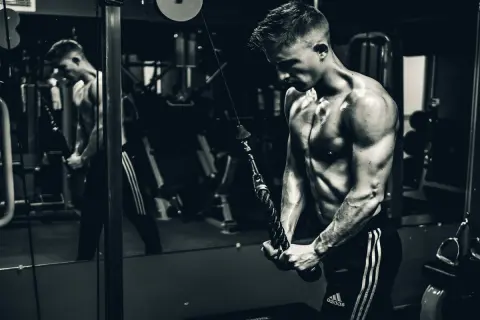 Saturday, October 5, 2024
Saturday, October 5, 2024Efficient Bicep Training: Tips for Rapid Progress
The biceps muscle group is among the most sought-after muscles to train. Well-defined and strong upper arms are regarded not only as an aesthetic symbol of fitness but also as functionally useful in various sports and everyday situations. Nevertheless, many individuals experience stagnation in their biceps training due to a lack of appropriate techniques or exercises. In this blog post, I will demonstrate how you can optimize your training for faster and more effective progress.
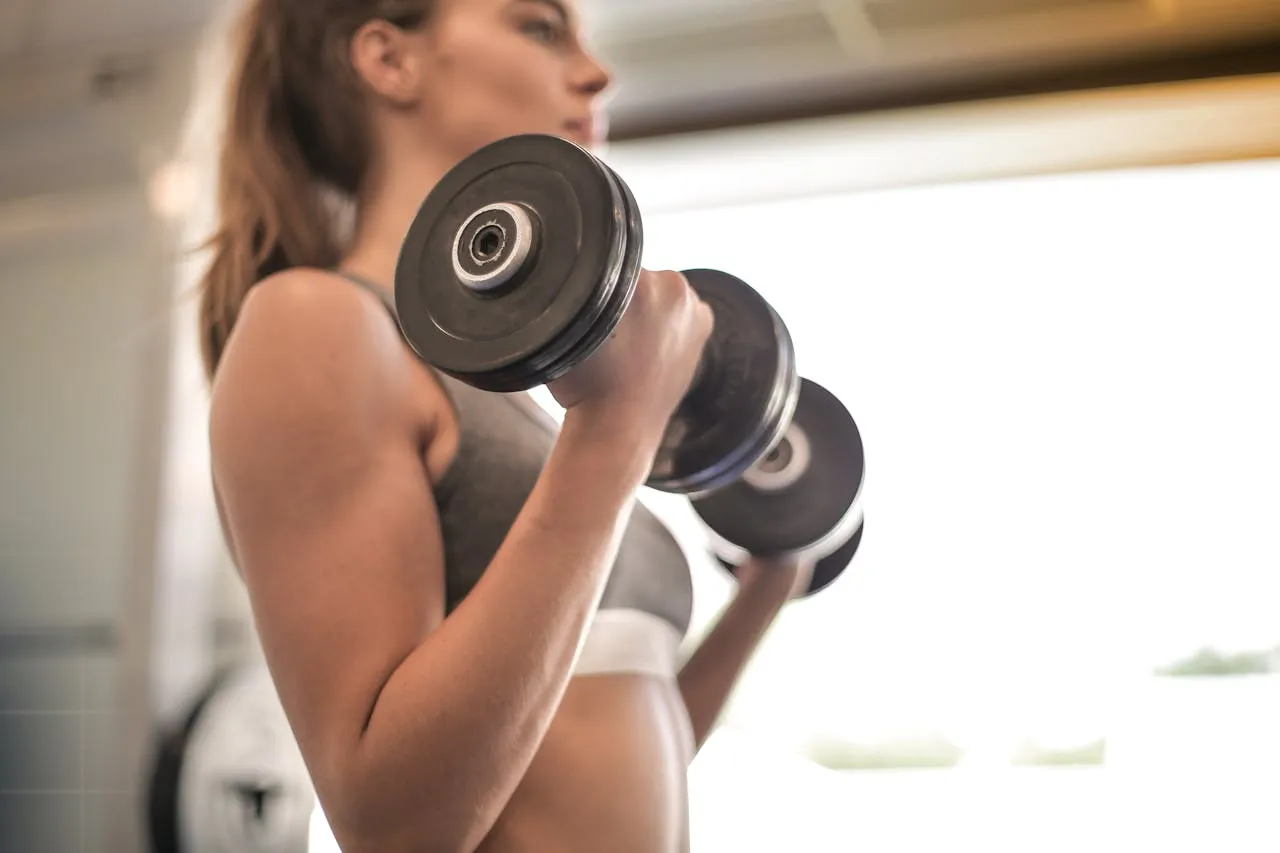
1. Understanding the Biceps Muscle
To maximize your workouts, you should first understand the anatomy of the biceps. The biceps brachii consists of two heads:
Long Head: This runs along the outer side of your upper arm and contributes to the volume of the biceps.
- Short Head: This is located on the inner side of your arm and adds to the shape and strength of the muscle. Additionally, there is the Brachialis, which lies beneath the biceps and plays a crucial role in elbow flexion. A well-developed brachialis can significantly enhance the volume of the upper arm.
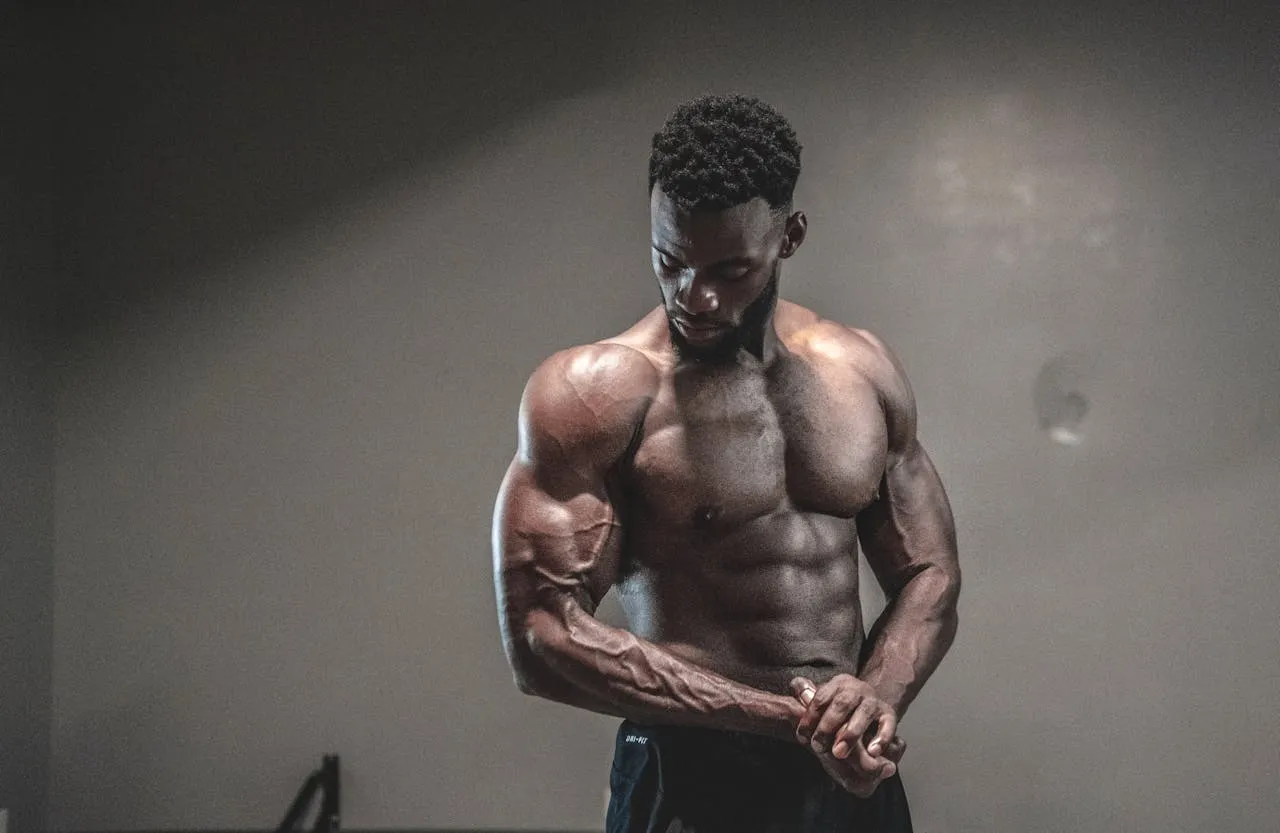
2. Choosing the Right Exercises
A balanced biceps workout should include various exercises to target the entire muscle. Here are the most effective exercises for your success:
Barbell Curls: A classic exercise that focuses on the biceps brachii. Ensure that you keep your wrist stable and do not push your elbow forward.
Dumbbell Curls: This exercise allows you to train each arm in isolation, helping to correct muscular imbalances.
Concentration Curls: Perfect for improving the peak contraction of the biceps. Sit on a bench, stabilize your upper arm against the inside of your thigh, and perform the curls slowly and controlled.
Hammer Curls: This variation involves holding the dumbbells in a neutral grip (thumbs up). This exercise trains the brachialis and the brachioradialis (the forearm muscle) more intensely.
- Reverse Curls: In this exercise, you hold the barbell with an overhand grip (palms down), which focuses on the brachialis and the forearm.

3. The Importance of Grip Variation
Altering grip angles and positions can direct training stimuli to different parts of the biceps muscle. Here are some variations:
Supinated Grip (palms up): The classic grip during biceps curls primarily activates the biceps brachii.
Neutral Grip (Hammer Grip): This grip emphasizes training the brachialis and the forearms more.
- Pronated Grip (palms down): This less commonly used grip activates the brachialis and forearm muscles more strongly, adding additional mass to the upper arm.
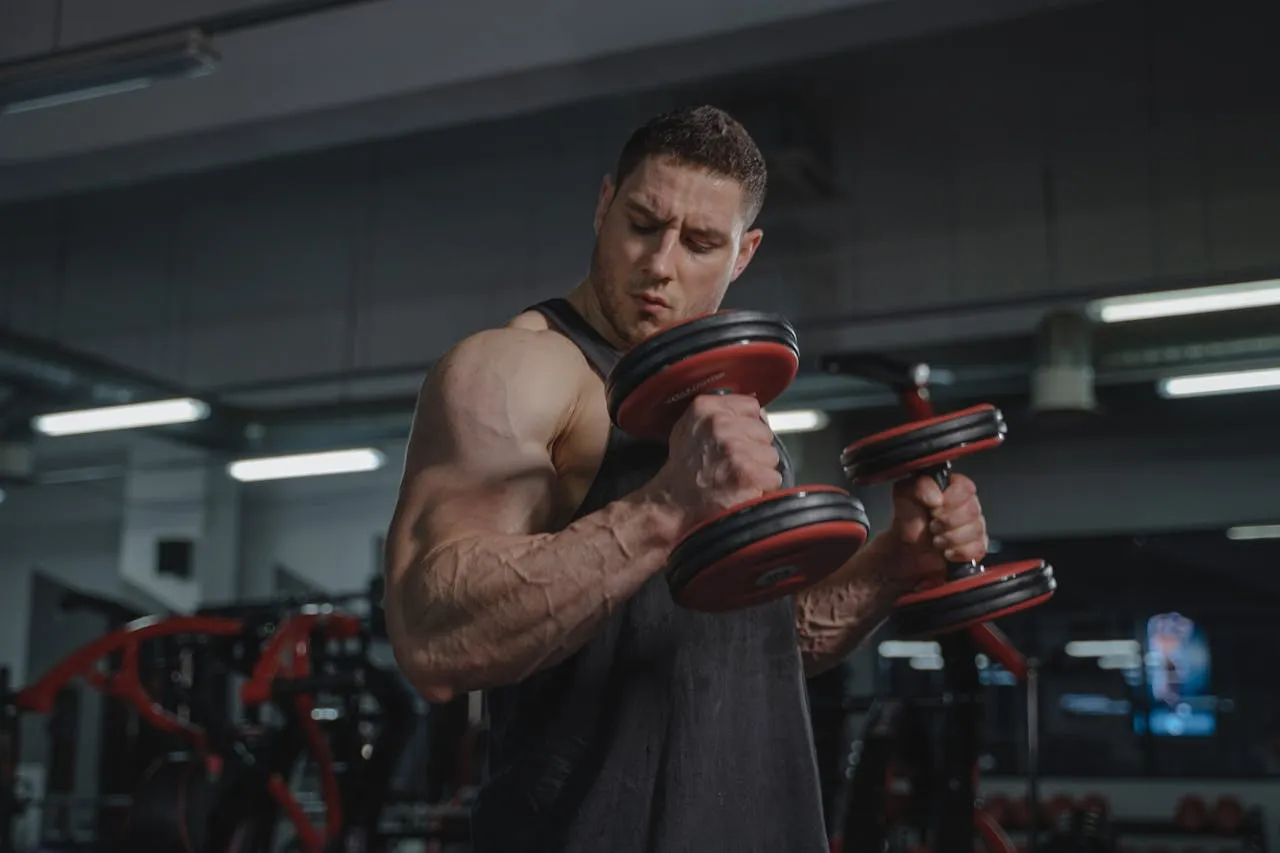
By varying your grip types, you can set different focuses and develop your entire arm evenly.
4. Progressive Overload
For continuous progress in muscle building, applying the concept of progressive overload is crucial. This means you need to gradually increase the weight or intensity of your training. There are several methods to incorporate progressive overload:
Increase the Weight: Raise the weight once you can perform 10-12 repetitions cleanly.
Increase the Volume: Add additional sets or reps to provide new stimulus to the muscles.
- Increase the Intensity: Shorten rest periods between sets or include intensity techniques like drop sets or supersets.
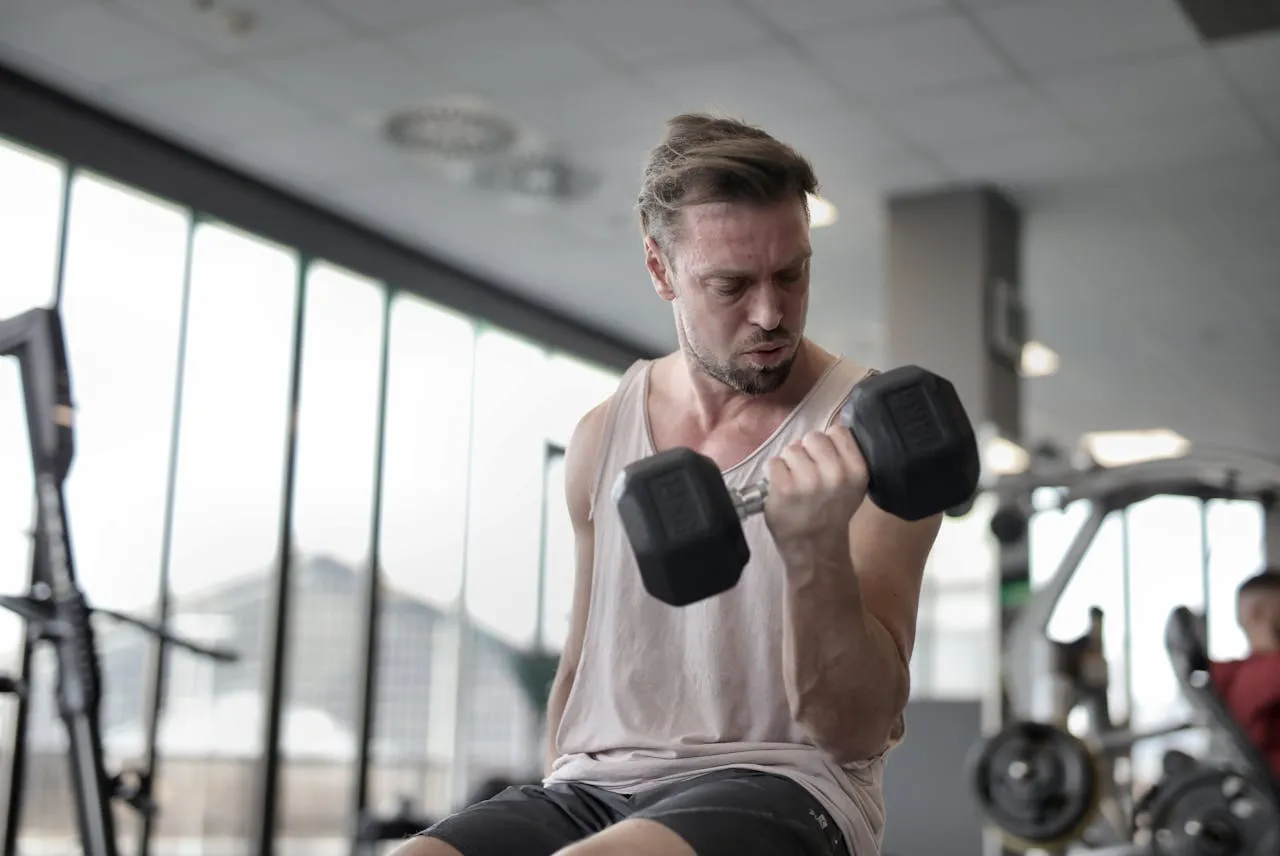
5. Focus on the Eccentric Phase
Most fitness enthusiasts tend to focus on the concentric (upward) phase of the exercise. However, studies have shown that the eccentric (downward) phase is equally important, if not more so, for muscle growth. By lowering the weight in a controlled and slow manner, you can exert additional stress on the muscle and thereby promote muscle growth.

6. Recovery and Nutrition
A common mistake many make when building muscle is neglecting recovery. Muscles do not grow during training, but during the rest periods afterward. Ensure that you provide your body with enough time to recover. This encompasses:
At least 48 hours of rest between intense biceps sessions.
Sufficient Sleep: 7-9 hours of sleep per night is optimal for muscle recovery.
- Protein-Rich Diet: Your body requires enough protein to build muscle. Aim to consume about 1.6 to 2.2 grams of protein per kilogram of body weight daily. Ideal sources include chicken, fish, eggs, low-fat quark, and legumes.

7. Incorporating the Whole Body
Another frequent mistake is focusing solely on the arms. A well-developed biceps benefits from a strong back since many pulling movements involve the biceps as well. Exercises such as pull-ups, rowing, and deadlifts strengthen the entire upper body and indirectly promote biceps growth.

8. Correct Form and Technique
One of the most important aspects of biceps training is proper technique. Athletes often tend to swing the weights or engage their shoulders too much. This can not only increase the risk of injury but also diminish the effectiveness of the workout. To avoid this:
Ensure that your upper arm remains as still as possible during the exercise.
Perform the movements in a controlled manner without swinging.
- Maintain tension in the muscle, especially at the lowest point of the movement.

9. Phase 2: Structured Training Plan
In the second phase of your biceps training, you should adopt a structured approach specifically aimed at advanced athletes. Here is a detailed plan with exercises, repetitions, and rest intervals:
Training Plan for Phase 2: Biceps Exercises
Barbell Curls
- Sets: 4
- Repetitions: 8-10
- Rest: 60-90 seconds
Dumbbell Curls (alternating)
- Sets: 3
- Repetitions: 10-12 per arm
- Rest: 60 seconds
Concentration Curls
- Sets: 3
- Repetitions: 10-12 per arm
- Rest: 60 seconds
Hammer Curls
- Sets: 3
- Repetitions: 12-15
- Rest: 60-90 seconds
Reverse Curls with Barbell
- Sets: 3
- Repetitions: 10-12
- Rest: 60-90 seconds
- Cable Curls with Straight Bar
- Sets: 4
- Repetitions: 12-15
- Rest: 60 seconds
Important Notes on Rest and Intensity:
Rest: Take 60 to 90 seconds of rest between sets. Shorter rest periods promote muscle fatigue and maximize muscle growth.
Progressive Overload: Increase the weight as soon as you can cleanly perform the upper repetition number (e.g., 12 or 15 repetitions). This ensures that you make steady progress.
- Rest Days: Do not train the biceps more than twice a week to ensure adequate recovery.

10. Patience and Consistency
Rapid progress in biceps training is possible, but only with patience and consistency. It takes time for muscles to grow and become visibly developed. Set realistic goals and adhere to a structured training plan.

